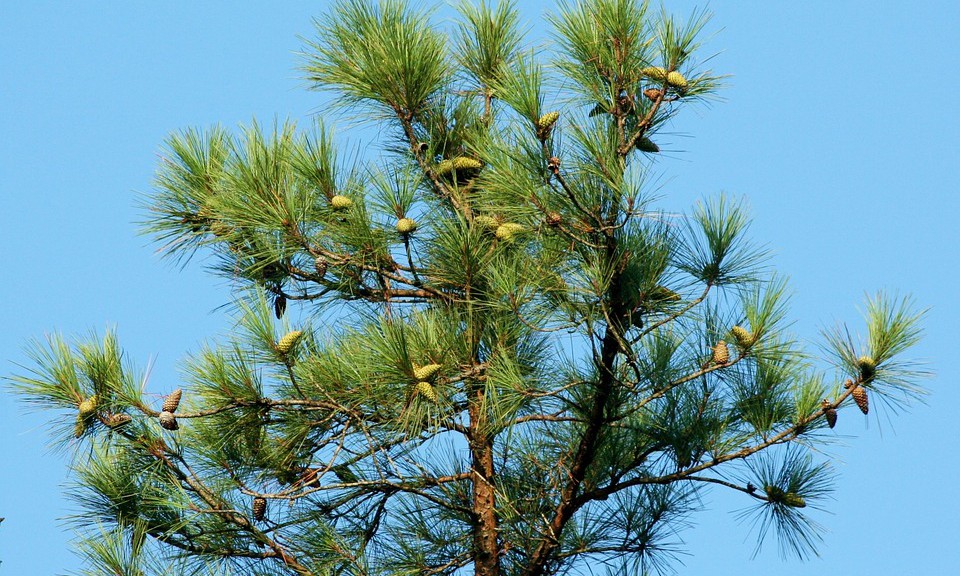A landscape presents a view of the land, a seascape, a view of the sea. A soundscape shows us the panorama of sound around us: the roar of engines, the cheers of a crowd, the ever-present music that attends our presence in stores, the luff of wind in a sail. We cannot avoid soundscapes; silence is one, too, and the most important, since it frames the rest.
I will not talk of silence, but of the soundscape of the forest, the sound of wind in the trees. That sound, tuned out by most of us as we rush about attending to our duties, does not present a single soundscape, but a variety of them. The sound of the wind through white pines is one, and its pitch changes with its speed. Then there is chatter of trembling aspen, not just trembling, but leaves striking each other forcefully, percussion without end. The scraping of oak leaves left in winter gives a sound picture of a February day, a memory of the warmer days of autumn. A gale through bare branches rocks the trees as it fills the air with a sound we are at loss to describe. Trees are musical instruments of the wind.
Thoreau had an affinity for the wind through the pines:
The white pines in the horizon, either single trees or whole wood, are particularly interesting. The wind is making passes over them, magnetizing and electrifying them…This is the brightening and awakening of the pines…As if in this wind-storm of March a certain electricity was passing from heaven to earth through the pines and calling them to life. ~ Journal of Henry David Thoreau, 1855-1861
In her childhood diary, Opal Whitely speaks of the whisperings of leaves in the wind:
Now are coming the days of brown leaves. They fall from the trees. They flutter on the ground. When the brown leaves flutter, they are saying little things. They talk with the wind. I hear them tell of their borning days when they did come into the world as leaves. And they whisper of the hoods they wore then. I saw them. I use to count them on the way to school. Today they were talking of the time before their borning days of this spring time. They talked on and on, and I did listen on to what they were telling the wind and the earth in their whisperings. They told how they were a part of earth and air before their tree-borning days. And how they were going back. In gray days of winter they go back to the earth again. But they do not die. ~The Story of Opal: The Journal of an Understanding Heart (p.56)
There is a word that describes the sound of wind in the leaves: psithurism (pronounced: SITH-ur-iz-m). It is obsolete, but I would like to do what I can to bring it back to life. For the most part, words that describe things people used to experience in nature have been replaced by those that point to technology: smart-phone, email, wi-fi, blue-ray, and all the rest. Would it be too much to wake people up to psithurism, a word that refers to something we all hear regularly?
Research is unclear as to whether excessive noise causes mental anguish, but here the wrong question has been asked. Better than asking if noise has harmful effects on our bodies and minds, is asking if quiet and psithurism can uplift us. For me, it does.
To be reminded of psithurism, you can always go to the internet and click on an appropriate link, here and here, but it is better to go outside on a windy day and just listen. Behind the sounds of traffic, the wail of sirens, the distant roar of aircraft, the barking of dogs, you will hear the rustling of leaves and the singing of pine needles. It is always there on windy days, yet we have learned to tune it out. Let us learn to listen.
Copies of Singing Creek Where the Willows Grow : The Mystical Nature Diary of Opal Whiteley and Selected Journals of Henry David Thoreau are available for checkout at Traverse Area District Library.

